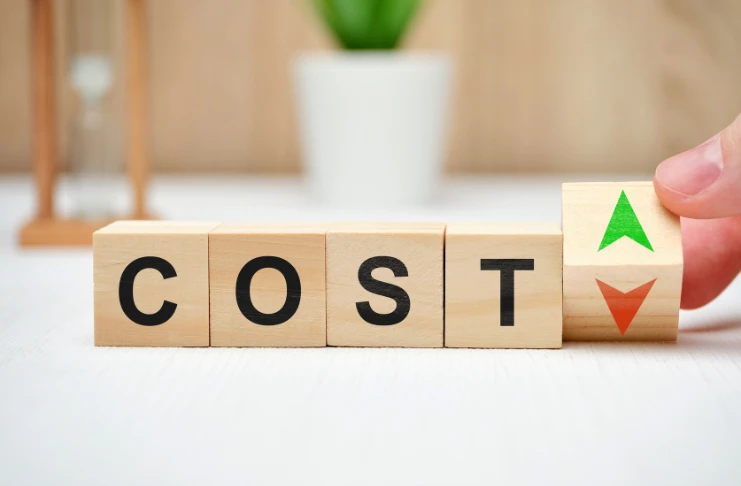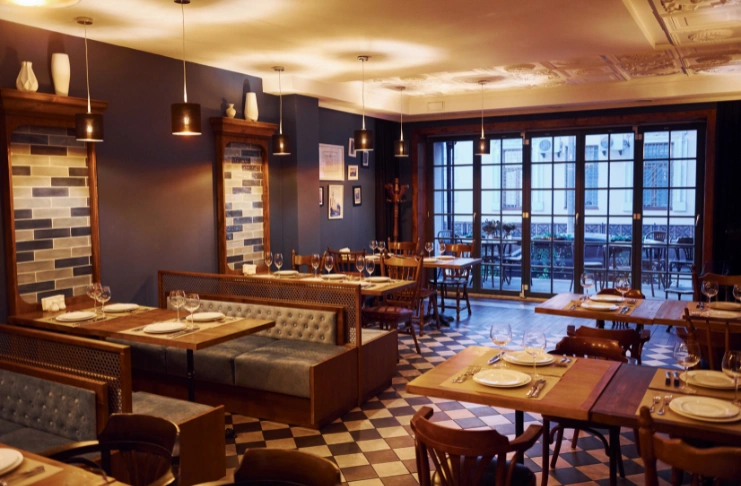For restaurant owners who’ve mastered their local market, franchising represents an enticing pathway to expansion that leverages your established success as a successful franchise restaurant while distributing the financial burden of growth.
Franchising isn’t just about multiplying your current success—it’s about transforming your restaurant concept into a franchise system that others can invest in and operate under your brand umbrella. This model creates a powerful win-win relationship: you expand your brand footprint and revenue streams without the full capital requirements of opening each location, while franchisees gain the opportunity to run a business with proven systems, recognized branding, and ongoing support.
From neighborhood favorite to regional powerhouse or national chain, franchising can accelerate your restaurant’s growth in ways traditional expansion cannot match. But the journey from your current restaurant to a thriving franchise requires careful planning, legal preparation, and operational excellence. In this comprehensive guide, we’ll walk through the essential steps, requirements, and considerations to successfully franchise your restaurant concept and build a lasting hospitality empire.
What Does It Mean to Franchise a Restaurant?

Franchising a restaurant means granting other entrepreneurs (franchisees) the right to use your brand name, systems, recipes, and operating procedures in exchange for fees and royalties. It involves a contractual relationship with a franchise company where the franchisor provides tools, training, and ongoing support, while the franchisee runs the day-to-day operations under strict brand guidelines.
This model not only minimizes capital risk for expansion but also allows you to enter new markets quickly and with the benefit of localized knowledge from your franchise partners, turning your operations into a profitable business .
Benefits of Franchising a Restaurant

Franchising offers multiple benefits, both financially and operationally, for growth-oriented restaurant owners looking to promote their existing brand.
INDUSTRY INSIGHTS
| The U.S. franchising industry continues to outperform expectations, showing remarkable resilience and growth amid economic uncertainties. According to the 2025 Franchising Economic Outlook by the International Franchise Association (IFA) and FRANdata, the sector grew by 2.2% in 2024, exceeding earlier projections—and is forecasted to expand by another 2.4% in 2025, outpacing the broader U.S. economy’s expected 1.9% growth.Franchise establishments are projected to reach 851,000, contributing over 9 million jobs and generating $936.4 billion in output. With franchise GDP expected to rise by 5% to $578 billion, the industry is being fueled by strong job creation, favorable economic policies, and surging regional growth, particularly in the Southeast and Southwest. As the franchise model continues to drive business expansion, personal services and retail food remain the fastest-growing sectors heading into 2025. |
First, it enables rapid expansion without relying solely on your own capital. Franchisees fund the setup of new outlets, reducing your financial burden. Second, it accelerates brand visibility—more locations translate into stronger regional and national recognition. Third, franchising shifts a portion of operational risks to franchisees, allowing you to focus on building a successful restaurant brand, quality control, and innovation.
Importantly, the model also provides a steady stream of revenue through franchise fees and ongoing royalties.
Is Your Restaurant Ready to Franchise?

Not every restaurant is built for franchising. Before you consider expansion, evaluate whether your business is truly franchise-ready.
Start by assessing the stability and profitability of your current operations. Have you sustained success in your current restaurant business for at least 12–24 months? Next, ensure you have documented systems in place—from sourcing and food prep to staffing and customer service. Standardization is key in replicating the experience across multiple franchise locations.
A strong brand identity is equally important. You must offer something unique—be it a signature menu, ambience, or customer experience—that creates demand beyond your existing geography. Finally, assess whether you have the operational bandwidth and leadership to support your existing franchisees in running your brand.
Requirements to Franchise a Restaurant

Franchising your restaurant isn’t just about giving someone your recipe book—it’s a regulated business strategy that requires a step by step guide for strategic planning and legal compliance.
To start, you need a registered trademark for your brand name, logo, and slogan. This is crucial for protecting your intellectual property. You’ll also need a Franchise Disclosure Document (FDD), which outlines your business model, legal obligations, fees, and performance history. It’s a mandatory document in countries like the U.S., where the Federal Trade Commission requires it to be shared at least 14 days before any agreements are signed.
Beyond legal paperwork, you must develop a comprehensive operations manual, provide training modules, establish a supply chain that supports scalability, and build a franchise support team. These elements are non-negotiable if you want to be a successful franchise owner with consistent quality and operational success across locations.
Legal Considerations & Documents Needed

Navigating the legal side of franchising is one of the most critical parts of the process—and one that requires the support of a seasoned franchise attorney.
Start with your Franchise Disclosure Document (FDD), which outlines 23 key items including company background, initial and ongoing fees, litigation history, financial performance, and franchisee obligations. You’ll also need to craft a Franchise Agreement, which acts as the binding contract between you and your franchisees, ensuring you both are protected from legal or financial trouble.
Other documents include your Operations Manual, which must detail everything from opening hours and staff uniforms to equipment lists and training SOPs. Register your trademark with the appropriate national authority (e.g., USPTO in the U.S., IPO in India). If your franchisees will operate in different regions, define territorial exclusivity to avoid conflicts.
Steps to Franchise a Restaurant

Successfully franchising your restaurant requires a step-by-step approach that’s both strategic and compliant with legal standards. Here are the essential steps to follow:
1. Evaluate Franchise Readiness: Start by assessing whether your current operations are scalable and profitable. This includes consistent unit economics, customer loyalty, and replicable systems.
2. Build a Franchise Business Plan: Outline your growth strategy, franchisee profile, target locations, pricing, support infrastructure, and financial projections. This becomes your franchising blueprint.
3. Protect Your Intellectual Property: Register trademarks for your name, logo, and slogans. This ensures brand protection as you expand into new markets.
4. Prepare the FDD and Legal Documents: Work with a franchise attorney to create the FDD and Franchise Agreement, ensuring full compliance with local laws.
5. Develop Operational Infrastructure: Document all processes—menu design, quality control, kitchen workflows, supplier lists, and marketing templates—in a franchise operations manual.
6. Set Up Franchise Support Systems: Build a team that can offer site selection advice, staff training, marketing support, and performance audits.
7. Define the Franchise Fee & Royalties: The average franchise fee for franchise restaurants ranges between $20,000 and $50,000, with royalty rates typically between 4% and 8% of gross sales.
8. Market Your Franchise Opportunity: Use your website, social media, and platforms like Franchise Direct and Franchise India to attract prospective franchisees.
9. Screen and Onboard Franchisees: Vet applicants carefully to ensure alignment with your values, operational capabilities, and financial capacity.
10. Provide Training and Launch Support: Train franchisees in all areas of the business and offer support during launch to ensure consistency and customer satisfaction.
Cost of Franchising Your Restaurant

The startup costs to franchise a restaurant vary depending on your legal, marketing, and operational preparedness. Expect to invest in several key areas.
Legal documentation—especially your FDD—typically ranges between $15,000 and $45,000, depending on the complexity and the legal expertise involved. Marketing materials and growth planning in sales and marketing may require $5,000 to $40,000 in total. Creating a training program/materials can add another $10,000 to $25,000, depending on complexity.
Overall, plan to invest between $30,000 and $100,000+ in initial franchising costs to build a successful business . However, this investment paves the way for long-term revenue and brand equity.
Building Your Franchise Support System

Your potential franchisees are your partners, not just customers. Supporting your existing restaurant franchisees effectively is key to sustaining growth and ensuring consistency across all locations.
Create a dedicated franchise support team that helps with pre-opening activities like site selection, vendor negotiations, and recruitment. Post-launch, offer continuous support through regional trainers, operational audits, monthly check-ins, and marketing campaigns.
A strong support system results in higher franchisee satisfaction, which leads to lower turnover and stronger brand loyalty—two key performance indicators in franchise success.
Marketing Your Franchise to the Right Partners

Finding the right franchise partners is more than just advertising; it’s about strategically targeting qualified prospects.
Start by creating a franchise marketing kit that outlines your business model, brand story, unit economics, franchisee support, and projected ROI. Leverage digital platforms like LinkedIn, franchise listing websites, and social media to generate leads. Attend franchise expos and industry networking events, and don’t underestimate the power of word-of-mouth from loyal customers who may want to invest.
Training and Operational Support for Franchisees

Training is the cornerstone of consistency. Your restaurant’s reputation depends on it being replicated with precision at every franchise location.
Offer a structured pre-opening training program lasting 2–4 weeks, covering operations, customer service, compliance, and POS use. Provide training manuals, videos, and in-person workshops. Post-launch, schedule site visits, mystery audits, and monthly performance reviews to track compliance and growth.
Common Mistakes to Avoid When Franchising

While franchising presents great opportunities, several mistakes can derail your efforts if not addressed early.
One common pitfall is rushing into franchising without clear SOPs, which leads to inconsistencies and a poor customer experience. Another is partnering with the wrong franchisees—those who lack financial stability or operational skills. Also, avoid underestimating the cost of franchise support, as this will impact long-term franchisee success.
Ignoring these red flags often results in negative brand perception, lawsuits, and failed outlets.
Franchise Success Story

Founded in 1986 in Arlington, Virginia, Five Guys began franchising in 2002. Within just 18 months, they sold options for over 300 units, showcasing rapid growth fueled by a commitment to operational excellence and franchisee support. Their streamlined menu and focus on quality have been key differentiators in the competitive fast-casual market.
This success story reinforces that growth through franchising works best when it is deliberate, data-driven, and support-heavy.
Conclusion
Franchising your restaurant is more than a growth strategy—it’s a responsibility. You’re inviting others to represent your brand, deliver your customer experience, and build your legacy. With the right legal foundation, operational systems, and franchise support structure, you can transform your established brand into a nationally or globally recognized brand.
Whether you’re operating a single bustling café or a high-traffic QSR, following the right steps to franchise a restaurant will help you expand strategically, reduce financial risks, and unlock long-term profitability.
Frequently Asked Questions
1. How much money do you need to franchise a restaurant?
You typically need between $30,000 and $100,000 to cover your start-up costs to franchise your restaurant, which is crucial when considering how to franchise a restaurant including legal fees, branding, training systems, and marketing infrastructure.
2. Is franchising a restaurant profitable?
Yes, franchising can be very profitable if your concept is scalable, your brand is strong, and you maintain strict quality control across outlets.
3. Is it hard to franchise a restaurant?
Franchising a restaurant can be challenging due to legal complexities, documentation, and the need for standardized systems, but it becomes manageable with expert guidance and preparation.
4. How long does it take to open a restaurant franchise?
It generally takes 6 to 12 months from planning to launch, depending on legal timelines, training, and site development.
5. How profitable is owning a franchise restaurant?
Profit varies by parent companies and location, but average net profits range between 5% and 15% of revenue after royalties and expenses.
6. How much does a restaurant franchise cost?
Franchise fees usually range from $20,000 to $50,000, with estimated start-up costs (including equipment, lease, and setup) ranging from $150,000 to $1 million+.
7. Is it hard to open a franchise restaurant?
To franchise a restaurant it requires financial readiness, operational discipline, and compliance with franchisor systems—but strong support from established brands can ease the process.
8. Why does it only cost $10k to own a Chick-fil-A franchise?
Chick-fil-A charges only $10,000 upfront, but they retain ownership of the store and profits, making franchisees more like operators than traditional owners.
9. What is the cheapest food franchise to start?
Affordable food franchises include Chester’s Chicken, Subway, or Baskin-Robbins, with initial investments starting as low as $20,000 to $50,000.
10. How much money should I have to start a franchise?
Most franchisors require $100,000–$250,000 in liquid capital and a net worth of $250,000–$500,000, depending on the brand and location.





